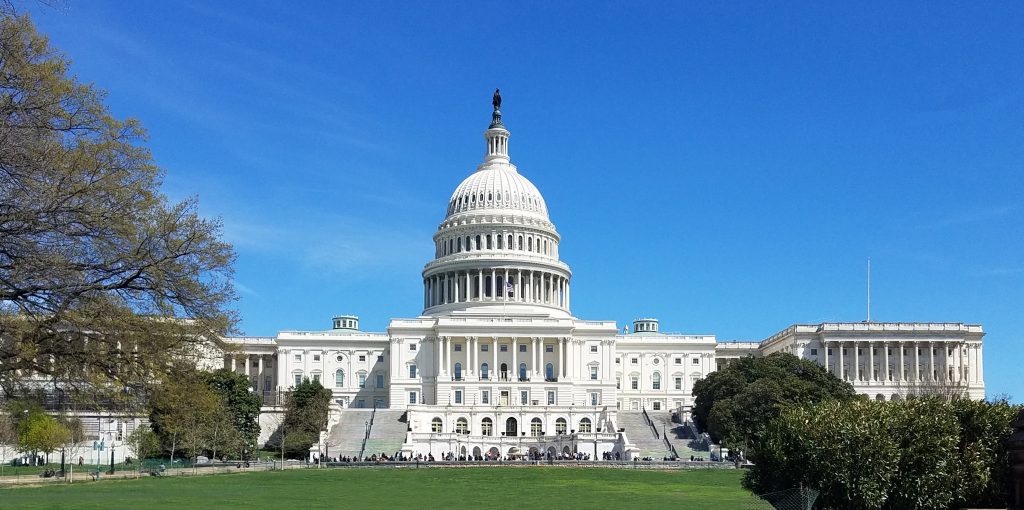The 2017 tax law has been widely derided for benefiting the wealthy and corporations far more than ordinary families. Thirteen senators and 52 House members have sponsored legislation that would make this problem worse.
Specifically, these lawmakers are seeking to achieve a backdoor repeal of the $10,000 cap on deductions for state and local taxes paid (SALT) by invalidating recent IRS regulations that cracked down on schemes that let taxpayers dodge the cap. If successful, their efforts would drain tens of billions of dollars from federal coffers each year, with the vast majority of the benefits going to the nation’s wealthiest families.
Rather than seek to undermine the regulations, Congress should urge the IRS to improve them. Specifically, the IRS still needs to issue guidance making clear that investors cannot use the types of state tax credits in question as tools to avoid paying federal tax on their investment gains.
Background
At issue are state and local tax credits received for so-called charitable contributions. For years, high-income taxpayers and their accountants have exploited these credits, receiving lucrative write-offs for donations that are largely or fully, reimbursed with a state tax credit. In effect, these credits allow taxpayers to transform SALT deductions (which have long been limited for certain taxpayers) into charitable deductions (which are subject to fewer limits).
This practice threatened to become more prominent in the context of the much stricter limit on SALT deductions (the $10,000 cap) enacted as part of the Tax Cuts and Jobs Act (TCJA). Fortunately, the IRS intervened with new regulations stipulating that taxpayers receiving large state or local tax credits in exchange for their contributions can no longer pretend that those “gifts” were truly philanthropic and deserving of a charitable deduction on their federal tax forms.
Prior to 2018, the tax avoidance strategy addressed by these regulations was most prominent in a handful of (mostly red) states that provide tax credits ranging up to 100 percent of the amount taxpayers contribute to support private K-12 school vouchers. These credits have long served as a backdoor way to move public funds into private schools.
After the 2017 Trump tax law capped SALT deductions at $10,000, interest in this SALT-to-charitable transformation surged. This manifested itself in an uptick in “donations” under preexisting red state programs and in the creation of new tax credits in a handful of blue states that rewarded donations to public education and other public services.
To its credit, the IRS addressed both branches of this tax avoidance scheme in an evenhanded fashion and largely resisted calls to offer preferential treatment to private schools. Had the IRS taken a more politicized approach, picking and choosing which state tax credits to subject to regulation, then the blue states and their elected representatives would have had good reason to seek to undermine the regulations. But this was not the case.
The Current Debate
If the current congressional effort to nullify the regulations succeeded, the short-run effect would be a flood of donations into existing credit programs, including to private school voucher funds, by high-income taxpayers seeking to dodge the SALT cap. Then, when most states reconvene in legislative session next year, state lawmakers would undoubtedly respond with a torrent of legislation allowing their residents to “pay their taxes” in the form of a “charitable gift.” Within a year or two, most states will likely have established such programs and the SALT cap will have unraveled.
For context, ITEP has estimated that outright repeal of the cap would cost $88 billion in 2019, with 63 percent of that flowing into the bank accounts of the nation’s top 1 percent of taxpayers. While backdoor repeal of the cap through this measure might be somewhat less costly, depending on state responses, its impact should be broadly similar.
Fortunately, the chances that this measure will be enacted are slim. In addition to having to convince a majority of the House to support such a steeply regressive proposal, proponents would need to secure bipartisan support in the Senate (though only a simple majority would need to vote in favor, rather than the usual 60). Many Democrats will no doubt balk at the bill’s price tag and its top-heavy distribution by income level, while most Republicans will be reluctant to unravel a key feature of their 2017 tax overhaul. Passage would need to occur within 60 legislative days of the regulations’ publication (June 13), per the rules put forth in the Congressional Review Act.
Even if the bill managed to pass both chambers within that timeframe, it would still need President Trump’s signature to become law. And for the measure to have its full effect, President Trump’s Treasury Department and the IRS would need to refrain from implementing other types of limits to the workarounds, such as through subregulatory guidance. It is possible, for example, that the IRS could respond to the invalidation of its broad, principled regulations with a more narrowly tailored announcement tamping down only on credits offered for donations to public entities, such as the blue-state workaround efforts.
But while an override of the regulations appears unlikely, the mere fact that this is being contemplated is not encouraging. Congress has plenty of alternatives to improve upon the SALT cap, but repealing the cap by facilitating misuse of the charitable deduction is not one of them.
A Better Path
At this point, the most productive response to these regulations is for the IRS to build upon them with more guidance. In particular, the IRS should announce how it intends to treat investors who “give away” their stock and are repaid with very large tax credits (sometimes 100 percent of the stock’s market value).
Without additional IRS guidance, there is a risk that investors in states like South Carolina will use charitable credits as a way to offload stock they wish to sell without having to pay federal or state tax on the capital gain because they allegedly “donated” their stock rather than sold it. This is a distortion of reality because the so-called “donor” actually received compensation in return for their donation, and the IRS has implied as much in its new regulations denying the charitable deduction in these cases. But absent a formal IRS statement on the matter, nobody can know for sure how the IRS views this potential tax shelter.
This is the conversation we should be having about the IRS’s regulations. Rather than seeking to undermine a broadly sensible IRS rule out of frustration with the SALT cap statute, Congress should be urging the IRS to immediately improve upon its regulations and should be setting the stage for a progressive SALT cap replacement down the road. More broadly, the core tasks of tax reform in the wake of TCJA should be raising revenue and asking more of the nation’s most affluent taxpayers – outcomes that are the direct opposite of what this ongoing congressional effort would accomplish.





